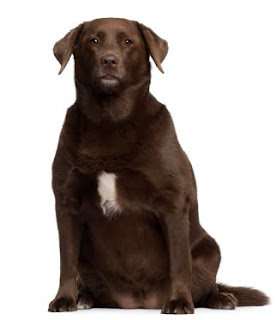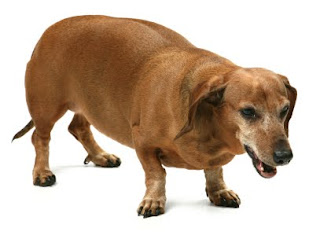
You look in the mirror. You notice a little extra jiggle - a bit of dreaded pudge. There it is - that thought:
"Oh, no! Am I getting fat?!"
What do you do? Ignore it...deny it...swear to cut out the cream on the morning latte...sweat it off at the gym?
Our happy go lucky canine friends are lucky enough to avoid these dreaded moments of self-awareness. Unfortunately, they cannot take control of the situation themselves. Humans (should) control the food and the exercise level of their pets. It's up
to us as responsible pet owners to realistically look at our dogs and ask:
"Is My Dog Fat?"
Yep, fat dogs are cute. But carrying extra pounds can have extremely detrimental health effects and can lead to premature death. High blood pressure, joint pain, and increased risk of injury and heart attack are just a few of the consequences of ignoring those few extra pounds on your adorable pooch.

It's Important to Be Realistic
From
: “The numbers are startling. Recent studies show that while veterinarians estimate 47% of their canine clients are overweight, only 17% of dog owners believe their dogs fit that description.”
How do I determine if my dog is overweight?

Here are a few simple test:
- Feel the pet's ribs. You should be able to easily feel individual ribs. There should be a slight amount of fat over them, but each rib should be distinct. If you can see the ribs, the pet is too thin. If you can't distinctly feel the ribs, the pet is overweight. If you can't feel the ribs at all, your pet is obese.
- Look at your pet from above. Your dog should have a definite waist behind its ribs. If the waist is extremely narrow or if bones protrude, the animal is too thin. If there is no waist, the dog is overweight. If the waist area is wider than the hips or ribs, the dog is grossly overweight.
Pet owners are often shocked and embarrassed to learn that their pet is overweight. It's hard for people to admit that their pet has a problem. We see our pet's health as a reflection of our love for them. But becoming aware of your pet's health risks and taking control of it is the most important thing. Changing their diet and exercise routine is a great way to show your best friend that you care.
Stay tuned for our next post: How To Help Your Dog Lose Weight

